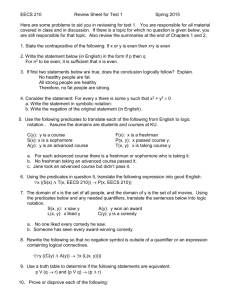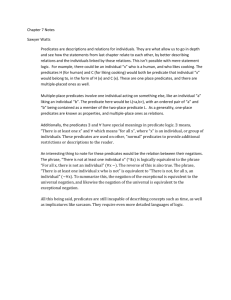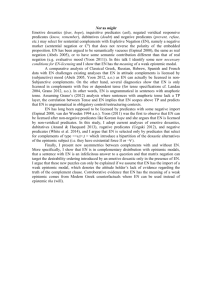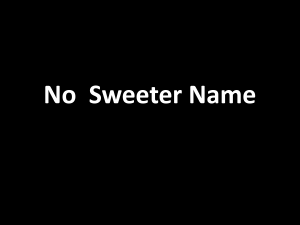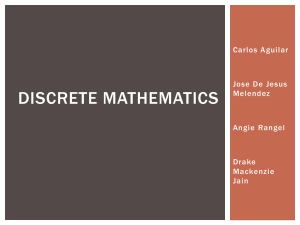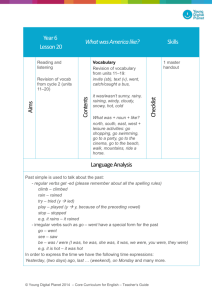P(x, y)
advertisement
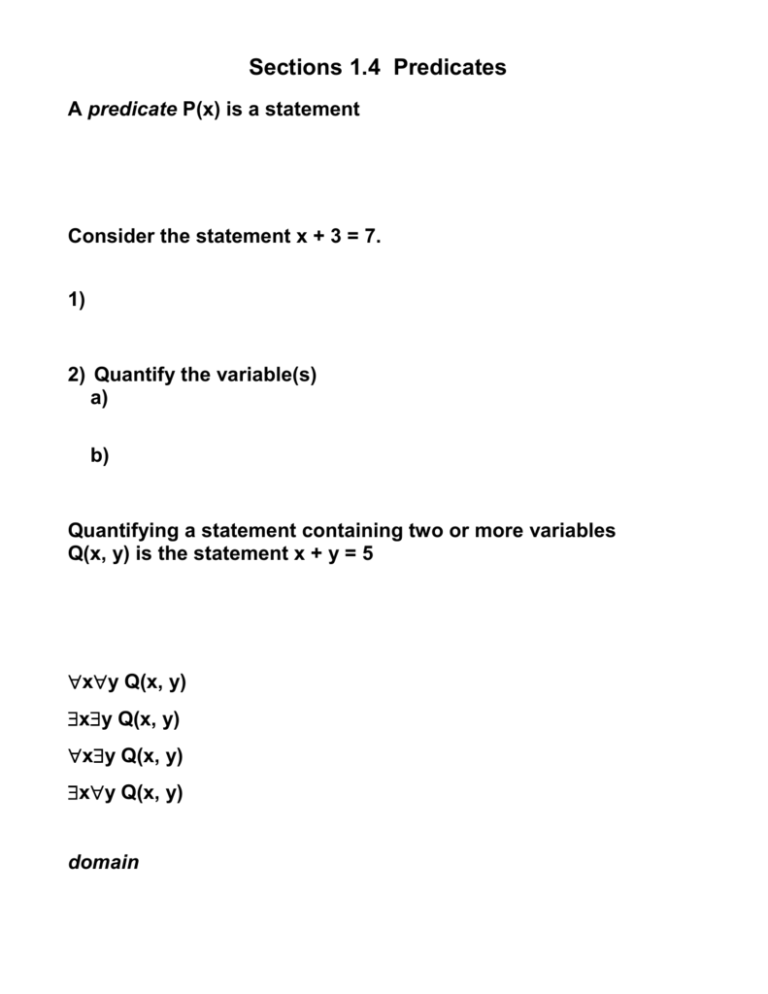
Sections 1.4 Predicates A predicate P(x) is a statement Consider the statement x + 3 = 7. 1) 2) Quantify the variable(s) a) b) Quantifying a statement containing two or more variables Q(x, y) is the statement x + y = 5 xy Q(x, y) xy Q(x, y) xy Q(x, y) xy Q(x, y) domain Definition (p. 43) 1. The symbol 2. The symbol means 3. The symbol means 4. The symbols and 5. A counterexample is P(x): x + 3 = 7 Predicate: x P(x) Domain: R(x): x3 ≥ 0 Predicates x R(x) and x R(x) Domain More examples Translating Quantified Statements Every student in EECS 210 has taken a programming class. S(x): Q(x): P(x): Some student in EECS 210 bought the textbook. B(x): When are the statements false? Expressing Negations: P(x): x is a professor Q(x): x is ignorant R(x): x is vain a) "No professors are ignorant" b) "All ignorant people are vain" c) "No professors are vain" Does statement c follow from a and b? Negating Quantified Statements Negation (x P(x)) Equivalent Statement x (P(x)) (x P(x)) x (P(x)) When true For some x, P(x) is false When false P(x) is false for For some x, all values of x P(x) is true P(x) is true for all x Stmt: Every student in EECS 210 is a sophomore or junior. Negation: Q(n, r): For every nonzero integer n there is a rational number r such that n = 1/r There is a unique x such that for every y, xy = y. R(x, y): xy = y More Examples D(x) is “x is a day” S(x) is “x is sunny” R(x) is “x is rainy” M is “Monday” Some days are not rainy. No day is both sunny and rainy. Monday was sunny; therefore every day will be sunny Quantifications of Two Variables Statement When true When false xy P(x, y) P(x, y) true for all choices yx P(x, y) of x and y Some pair x, y makes P(x, y) false xy P(x, y) Given x a y can be found to make P(x, y) true For some x, every choice of y makes P(x, y) false xy P(x, y) For some value of x every y makes P(x, y) true For every x, there is some y for which P(x, y) is false xy P(x, y) yx P(x, y) There is an x, y pair that makes P(x, y) true P(x, y) is false for every pair x, y More Examples Use the predicates given below to write each of the statements that follow them in symbolic notation. The domain is the set of all movies. M(x): “x is a mystery” D(x): “x is a drama” C(x): “x is a comedy” B(x, y): “x is better than y” a. Some mysteries are dramas. b. Some comedies are better than all dramas. c. For every drama there is a comedy better than it. d. Only comedies are better than mysteries. e. Not every comedy is a mystery. Negating Implications The implication p q is logically equivalent to p V q. Thus, the negation of p q is the statement p q p q T T T F F T F F F(x): x is a fruit pq p pVq q p q V(x): x is a vegetable S(x, y): x is sweeter than y Some vegetable is sweeter than all fruits Every fruit is sweeter than some vegetable Only fruits are sweeter than vegetables Logical Equivalences for Conditional Statements p q p V q (p q) p q p q q p (p q) (p r) p (q r) p V q p q (p q) V (p r) p (q V r) p q (p q) “No professor has been asked questions by all of his students.” S(x): x is a student P(x): x is a professor A(x, y): x has asked y a question What does each translation actually mean? x y ((S(x) P(y)) A(x, y) x y ((S(x) A(x, y)) P(y) x y (A(x, y)) x y (((S(x) P(y) )A(x, y)) x y ((P(y) S(x)) A(x, y)) x y(P(x) A(x, y)) x y(P(x) (S(y) A(x, y) )) A correct translation: Let the domain be all students at KU. Use the given predicates to write each of the statements below in symbolic notation. C(x): “x is a computer science major” D(x): “x is a computer engineering major” E(x): “x has attained upper level eligibility” T(x, y): “x is taking course y” A(y): “y is an advanced course” P: Physics 212 M: Discrete Structures a. No computer engineering major is taking Physics 212. b. Every computer engineering major who has attained upper level eligibility is taking an advanced course. c. Only advanced courses are being taken by computer science majors who have attained upper level eligibility. d. Advanced courses are being taken only by computer science majors who have attained upper level eligibility.
